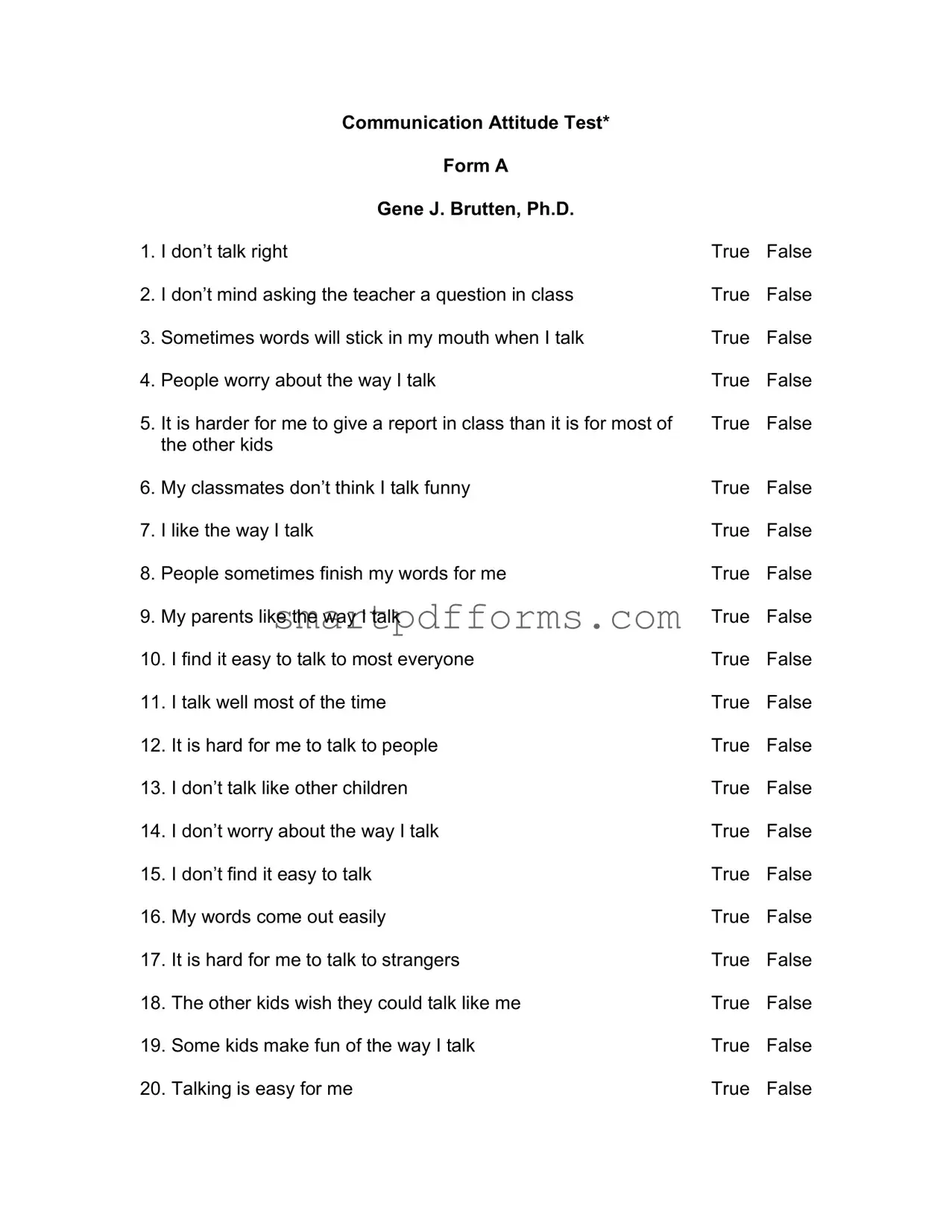The Communication Attitude Test A, designed by Gene J. Brutten, Ph.D., serves as a pivotal tool in assessing individuals' attitudes towards their own communication abilities. This form, consisting of 35 statements, gauges participants' perceptions about how they talk, covering a spectrum from ease of conversation to difficulties they might face in verbal exchanges. Respondents indicate their agreement with statements such as 'I don’t talk right', 'Sometimes words will stick in my mouth when I talk', and 'I would rather talk than write', providing insights into their self-assessment of speaking fluently or encountering communication challenges. By marking statements as True or False, individuals reflect upon their comfort level in various speaking scenarios, including talking to strangers, participating in class, or even expressing their names. This assessment not only underscores areas where a person might struggle with speech but also highlights aspects of verbal communication they feel confident about. The form's straightforward yet comprehensive approach makes it an invaluable resource for professionals aiming to understand and support those grappling with speech and communication concerns, thereby paving the way for targeted interventions that can profoundly impact an individual's confidence and capability in expressing themselves verbally.
